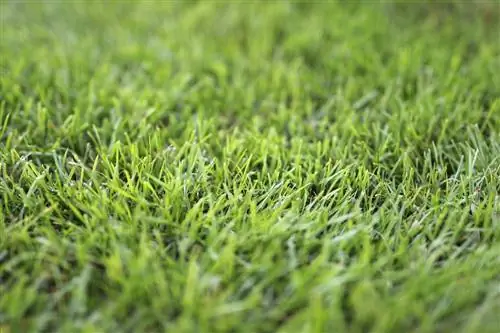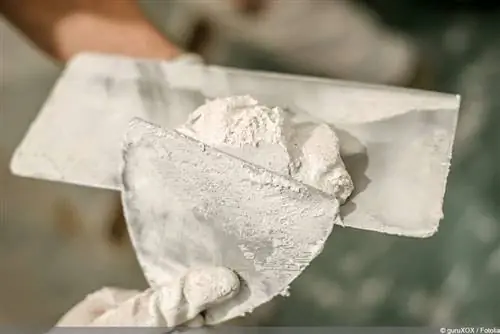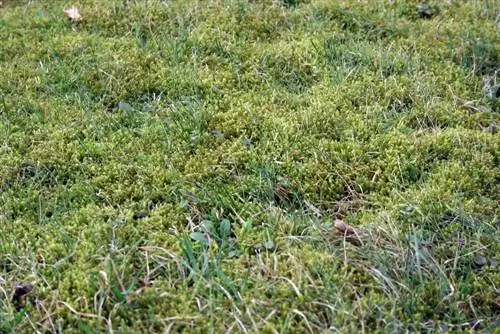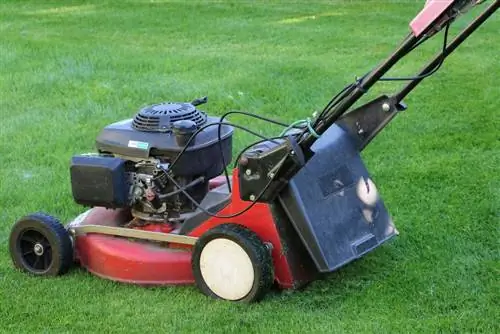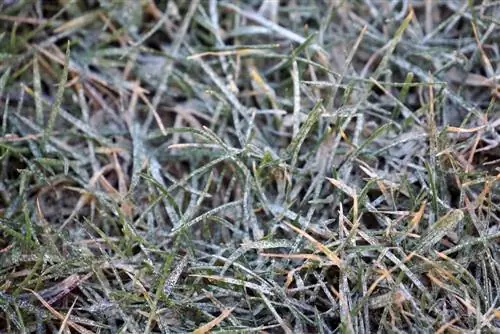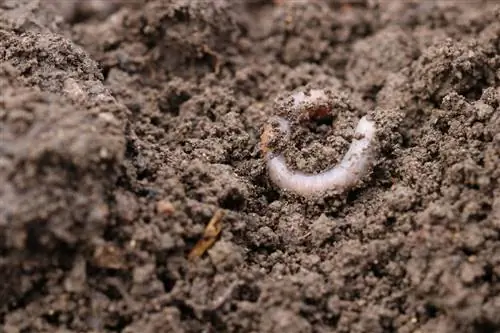- Author admin [email protected].
- Public 2023-12-17 03:39.
- Last modified 2025-06-01 06:48.
A new lawn is being laid and now the question arises as to how much new soil is needed here. The following article explains what needs to be considered when it comes to turf soil for turf or sowing.
Which soil is suitable?
If you want to create a new lawn or renew an existing one, the first thing you should do is check the existing soil. Because not everyone is suitable for the lush, green lawn that every garden owner wants. Therefore, the lawn substrate used should have the following properties:
- Check underground
- Add compost and sand to clayey soil
- Add more humus for sandy soil
- then the lawn substrate
- large content of compost and humus
- 50% compost
- 30 - 40% humus
- Rest of sand substrate
Due to the composition, the plants not only get all the nutrients they need right from the start, but the addition of sand also makes the soil loose and can serve as drainage. In this way, excess water can drain away quickly and no waterlogging occurs. In this way, the new plants from the sowing can develop optimally and a turf can grow well.
Tip:
You can make the lawn substrate yourself if you don't want to buy a ready-made mixture from the market. Otherwise, you can buy the lawn substrate in liter quantities from well-stocked garden shops.
Prepare the lawn
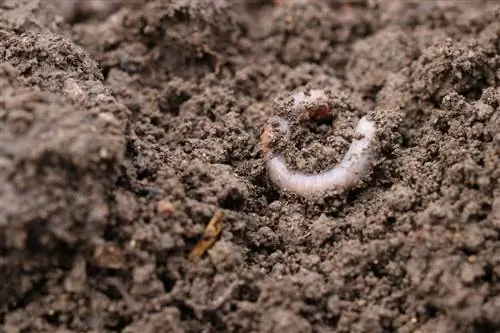
It is often the case that the area on which the lawn is to be laid is not completely straight. The first thing to do is to work on the surface and straighten it so that there are no more holes. In addition, as described above, the lower layer should be prepared. Only then is the layer of prepared or purchased lawn soil added. However, the following can apply to all lawns when preparing the topsoil:
- loamy soil with quartz or river sand
- about 8-10 liters of sand per 100 m² area
- no humus needed here
- incorporate bark humus into sandy, light soil
- about 8-10 liters of humus per 100 m² area
- Place the prepared substrate for lawn on this area
How much lawn soil is necessary?
Lawn plants are not deep-rooted. Therefore, the substrate used, which is added to the existing topsoil, does not need to be applied very high. So it is completely sufficient if it is between 0.5 and 1.5 cm high. This also depends on whether turf is laid with soil or the lawn is sown. When sowing, the layer should be higher than with turf. Afterwards, regardless of this preparation, the following amount of substrate is added:
- per m² area 10 liters of finished or self-made lawn soil
- distribute the lawn soil evenly
Tip:
After the substrate has been applied, you should let the soil rest for about two to three weeks before sowing the lawn or rolling turf. This means that the surface can settle accordingly and can be straightened again in various places if holes have formed, for example due to rain.

